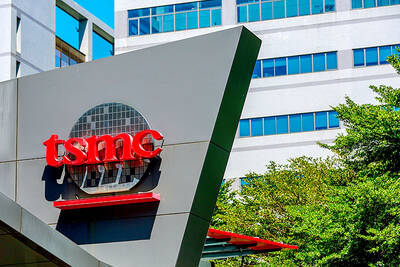The start of China’s peak construction season was supposed to finally boost demand for iron ore, which has endured a tempestuous year with prices now trading near this year’s lows.
However, the bounce has not happened, with traders now puzzling over what could be the next catalyst for a price rally in the crucial steelmaking material.
China’s usual boom period for infrastructure construction and steel-related demand in September and October has so far offered no reprieve for investors in the iron ore market, which just notched its longest streak of weekly losses on record. The Chinese economy continues to contend with a severe housing slump and COVID-19 lockdowns.
Bets that fresh financing for the property sector — which accounts for one-third of steel consumption — would aid demand recovery during the peak season have since unraveled, with the 100 biggest real-estate developers seeing sales of new homes last month plunge by one-quarter. That is even as financial regulators rush to stem the liquidity crisis, telling the nation’s six largest banks to offer at least 600 billion yuan (US$85 billion) of net financing.
While steel mills typically restock iron ore supplies before the Chinese National Day holidays at the start of October, their profit margins are also languishing and they are limiting purchases to a needs-only basis.
Meanwhile, China’s purchasing managers’ index last month rose only marginally to 46.6. A reading below 50 suggests contraction in the steel industry.
“It’s certainly the worst autumn since 2015,” Tomas Gutierrez, an analyst at Kallanish Commodities, said in e-mailed comments. “Real estate is far too big a part of the whole economy and no other sector can expand rapidly enough to make up for lost construction steel demand.”
Gutierrez was referring to the period seven years ago that also saw a sharp slowdown in China’s property and factory activity.
The raw steel-making ingredient that is crucial for the construction, machinery and automotive sectors is regarded a barometer of Chinese growth. The World Bank’s most recent forecast shows the nation’s economic expansion would decelerate to 2.8 percent this year, a mere third of the 8.1 percent rate last year. That bleaker outlook would limit the upside in iron ore prices.
With the Chinese economic outlook and its consumer confidence appearing grim, steel prices will be capped, said Kamal Ailani, a senior analyst at McCloskey by OPIS, which is owned by Dow Jones & Co.
Layered atop economic woes, the growth in China’s steel production last month has also triggered concerns about oversupply, Ailani said.
To be sure, not all market players are pessimistic, with some analysts expecting prices to at least stabilize this quarter.
“In my years in steel, 2015 is probably the worst year, and, fortunately, we are not there yet,” Richard Lu, a senior analyst at CRU International Ltd, said in e-mailed comments.
CRU forecast some improvement this quarter, with steel demand supported by new infrastructure projects.
Meanwhile, Ailani expects iron ore prices trading down from current levels, but still “well supported around [US]$85 a ton” this quarter.
Below that level, small to medium-sized miners might have to reduce production given increased costs, he said.
The slump in China’s construction sector has also crushed global demand for bulk ships. Freight rates to hire a Capesize vessel have plummeted almost 80 percent from October last year, most of it due to weaker iron ore demand from the nation, traders and shipbrokers said.
For now, shrinking stockpiles are still providing some buffer for the steel market, although investors will be eyeing the looming Chinese Communist Party congress that is scheduled to start on Sunday for signs that the government would make any changes to its COVID-19 and property deleveraging policies.

RUN IT BACK: A succesful first project working with hyperscalers to design chips encouraged MediaTek to start a second project, aiming to hit stride in 2028 MediaTek Inc (聯發科), the world’s biggest smartphone chip supplier, yesterday said it is engaging a second hyperscaler to help design artificial intelligence (AI) accelerators used in data centers following a similar project expected to generate revenue streams soon. The first AI accelerator project is to bring in US$1 billion revenue next year and several billion US dollars more in 2027, MediaTek chief executive officer Rick Tsai (蔡力行) told a virtual investor conference yesterday. The second AI accelerator project is expected to contribute to revenue beginning in 2028, Tsai said. MediaTek yesterday raised its revenue forecast for the global AI accelerator used

Taiwan Semiconductor Manufacturing Co (TSMC, 台積電) has secured three construction permits for its plan to build a state-of-the-art A14 wafer fab in Taichung, and is likely to start construction soon, the Central Taiwan Science Park Bureau said yesterday. Speaking with CNA, Wang Chun-chieh (王俊傑), deputy director general of the science park bureau, said the world’s largest contract chipmaker has received three construction permits — one to build a fab to roll out sophisticated chips, another to build a central utility plant to provide water and electricity for the facility and the other to build three office buildings. With the three permits, TSMC

The DBS Foundation yesterday announced the launch of two flagship programs, “Silver Motion” and “Happier Caregiver, Healthier Seniors,” in partnership with CCILU Ltd, Hondao Senior Citizens’ Welfare Foundation and the Garden of Hope Foundation to help Taiwan face the challenges of a rapidly aging population. The foundation said it would invest S$4.91 million (US$3.8 million) over three years to foster inclusion and resilience in an aging society. “Aging may bring challenges, but it also brings opportunities. With many Asian markets rapidly becoming super-aged, the DBS Foundation is working with a regional ecosystem of like-minded partners across the private, public and people sectors

TEMPORARY TRUCE: China has made concessions to ease rare earth trade controls, among others, while Washington holds fire on a 100% tariff on all Chinese goods China is effectively suspending implementation of additional export controls on rare earth metals and terminating investigations targeting US companies in the semiconductor supply chain, the White House announced. The White House on Saturday issued a fact sheet outlining some details of the trade pact agreed to earlier in the week by US President Donald Trump and Chinese President Xi Jinping (習近平) that aimed to ease tensions between the world’s two largest economies. Under the deal, China is to issue general licenses valid for exports of rare earths, gallium, germanium, antimony and graphite “for the benefit of US end users and their suppliers